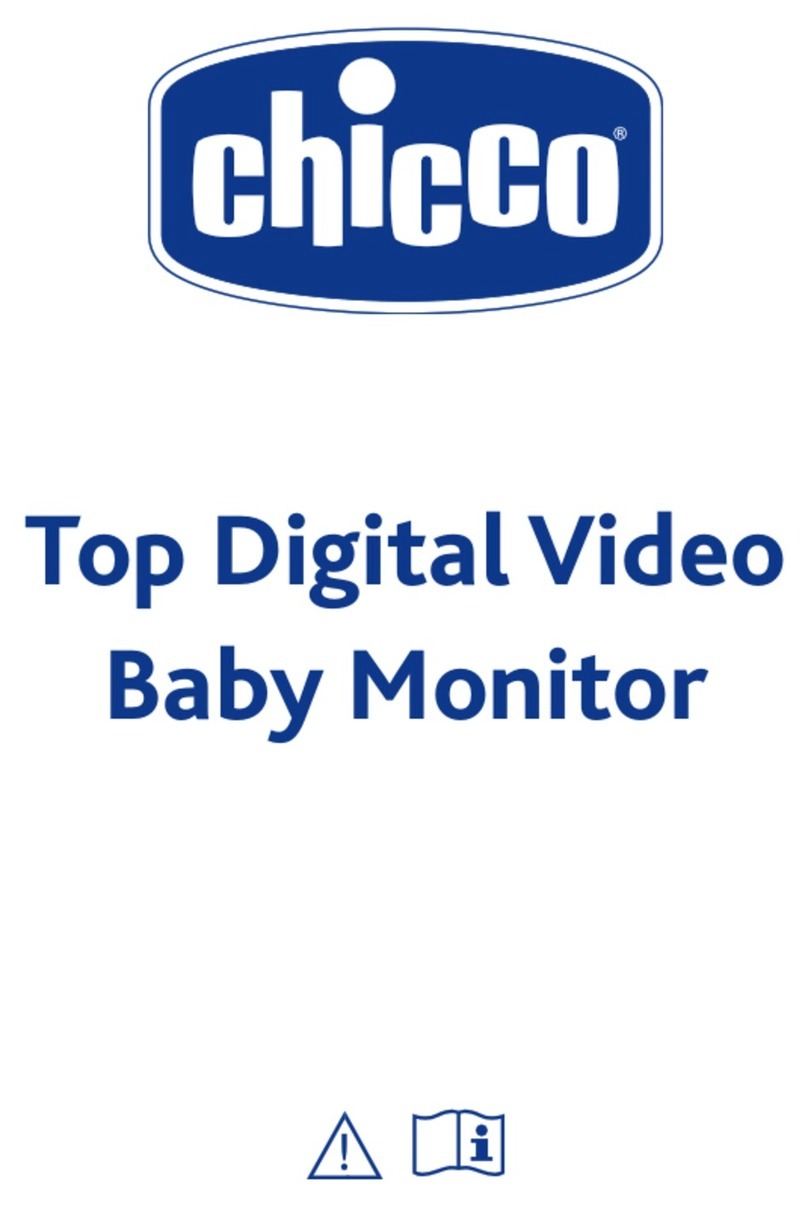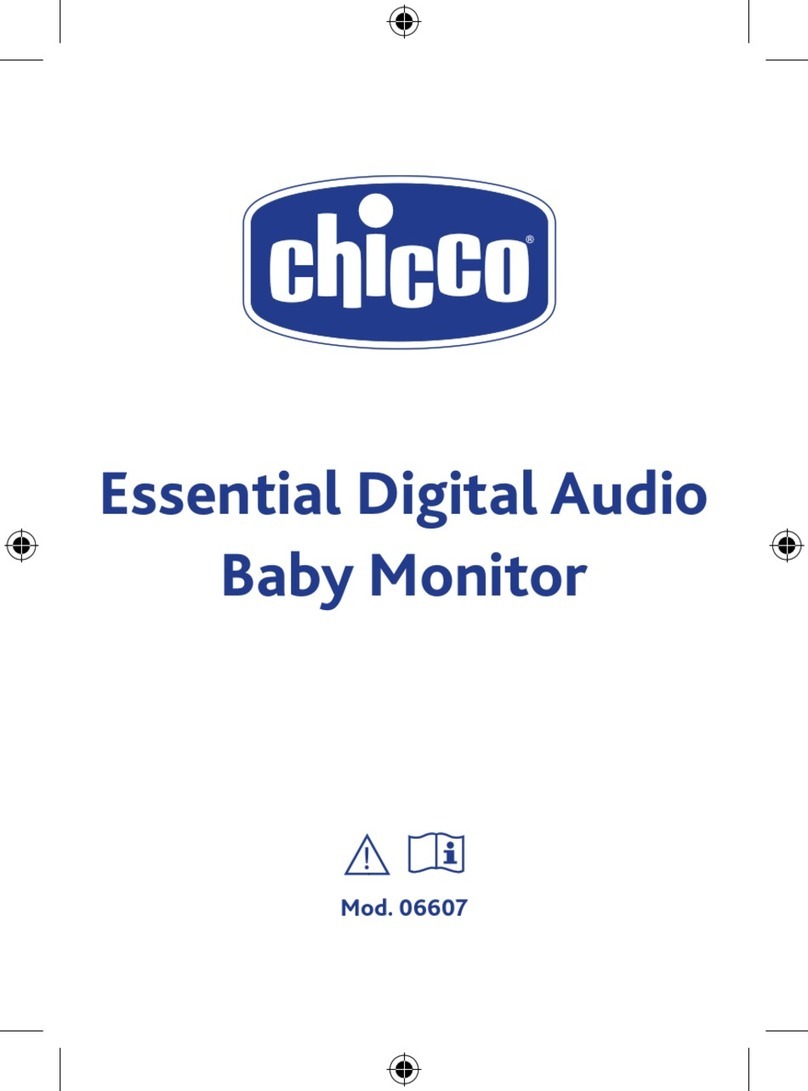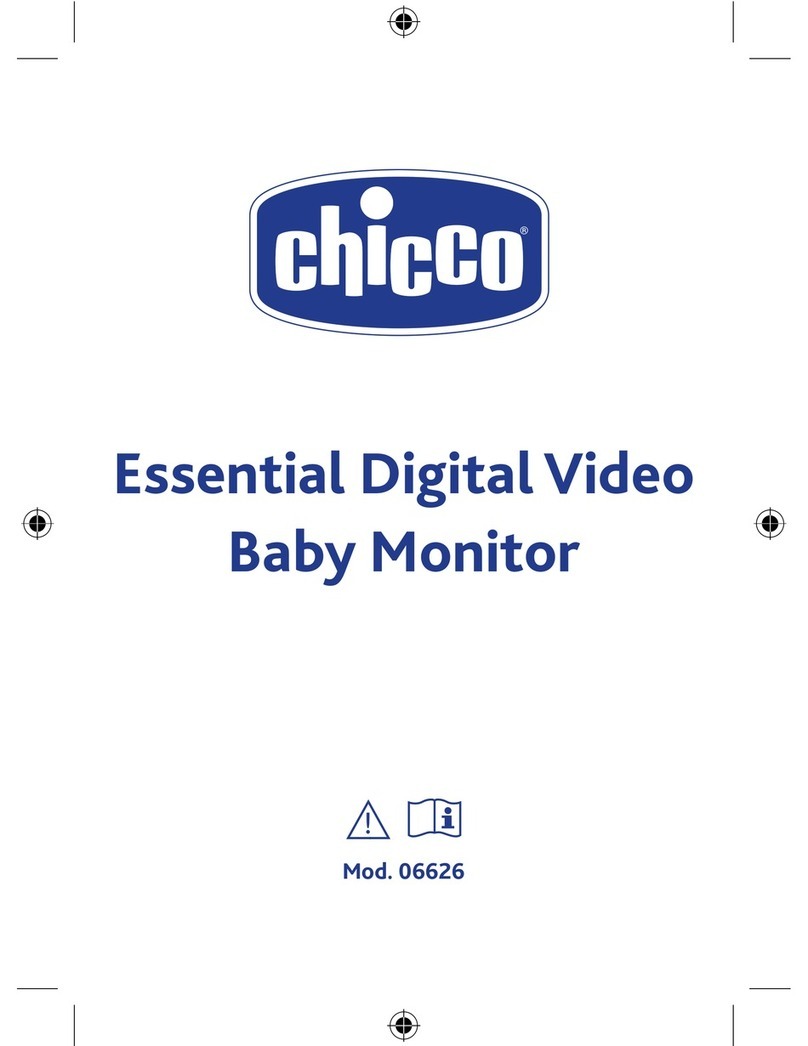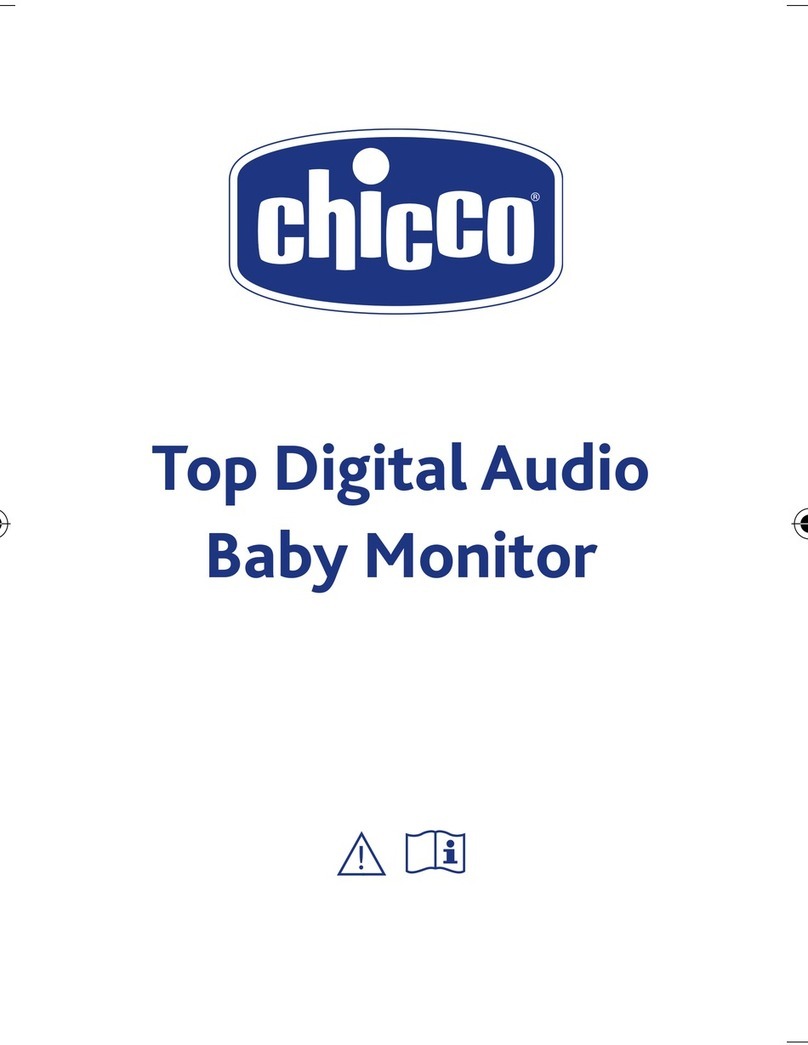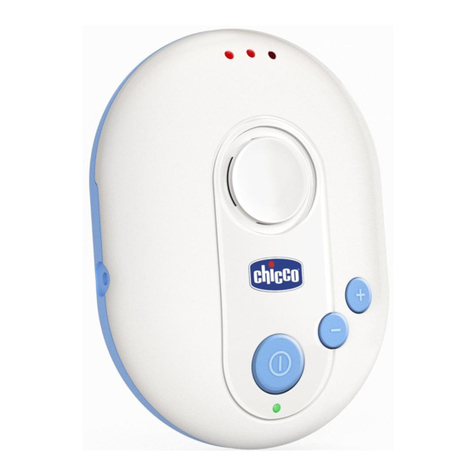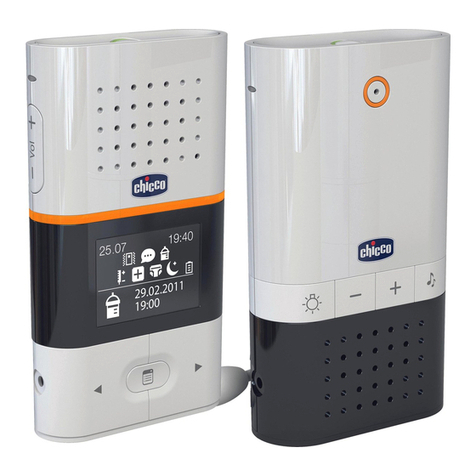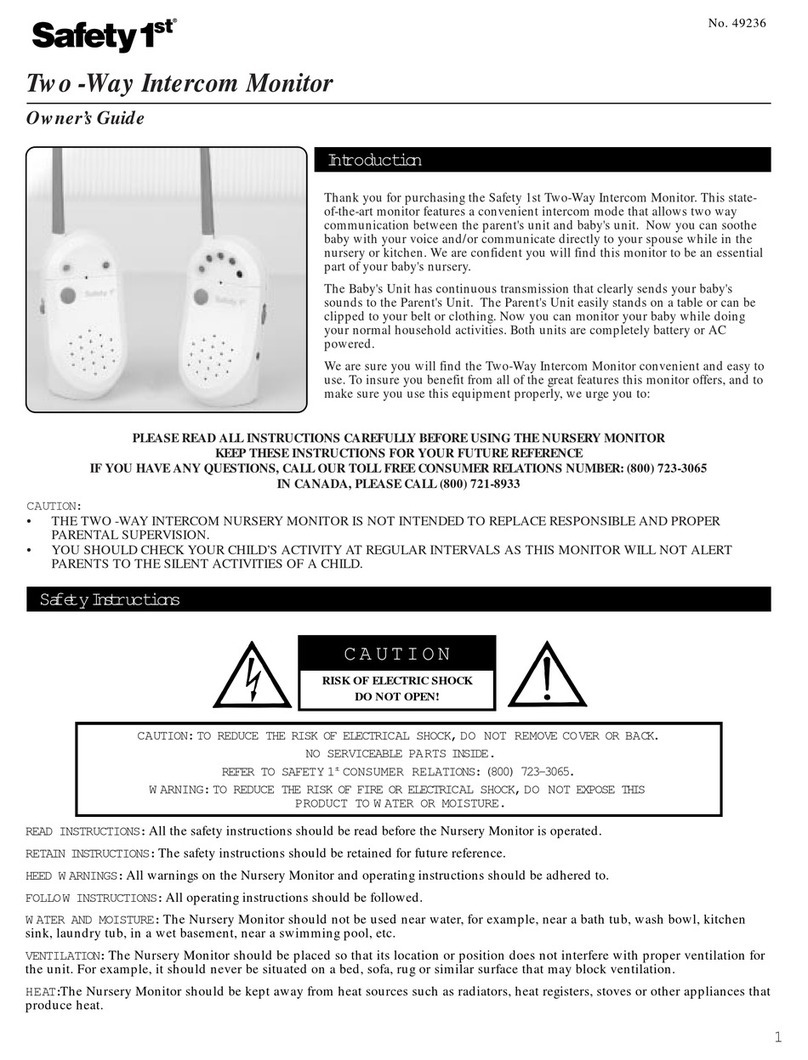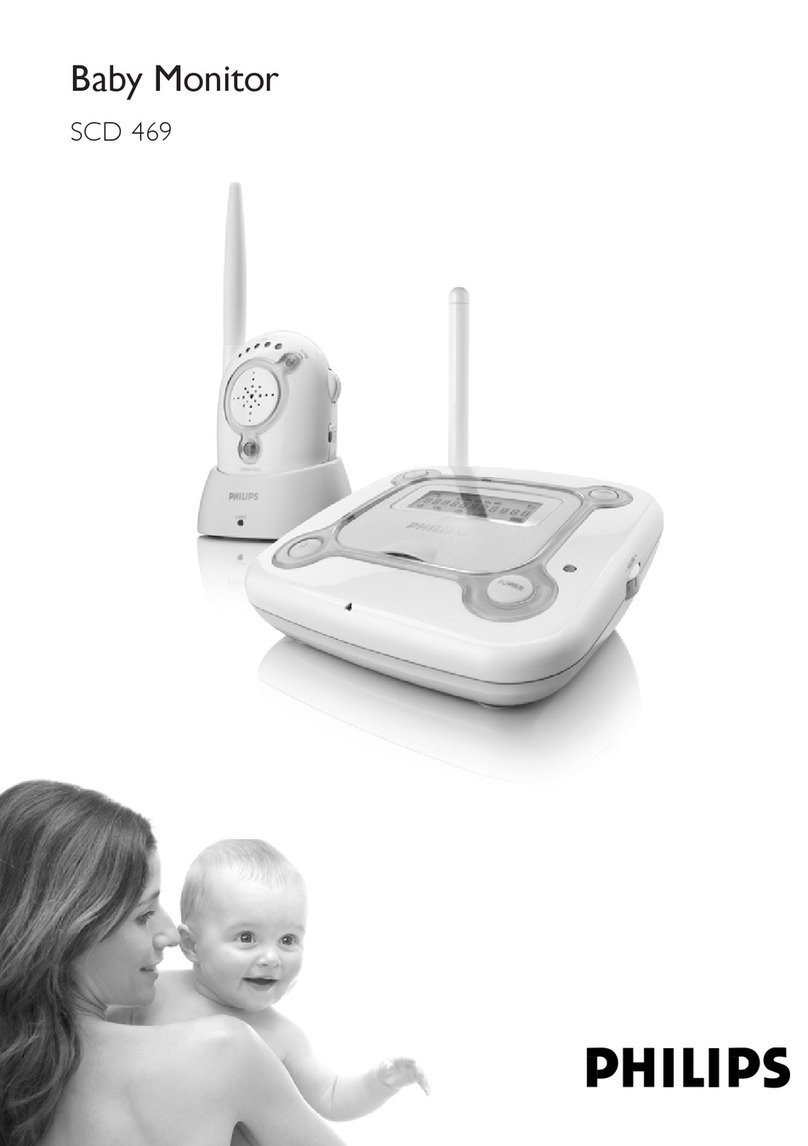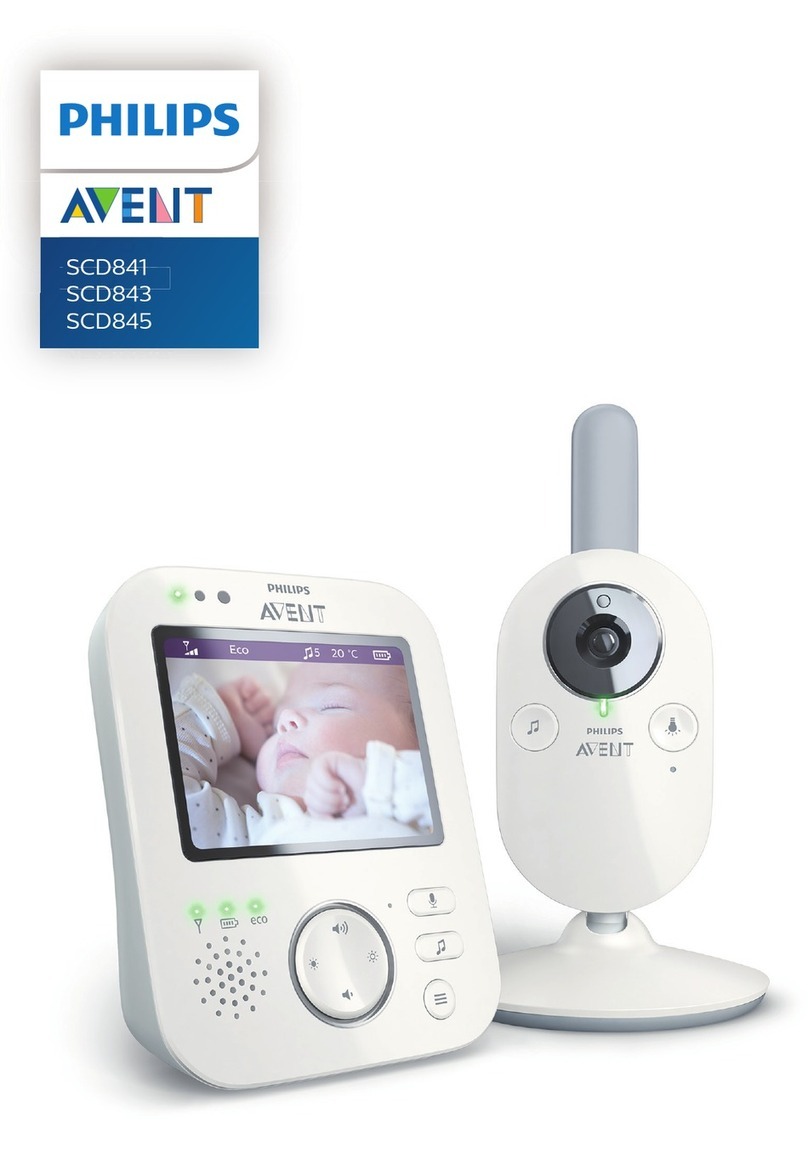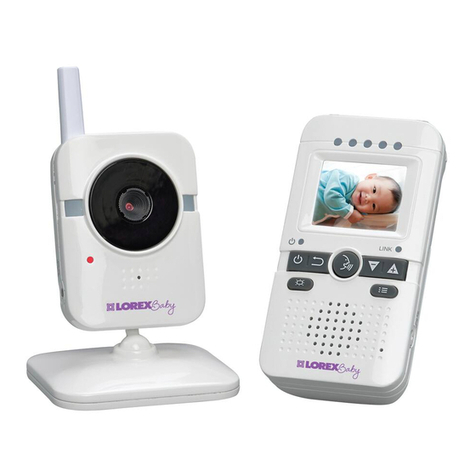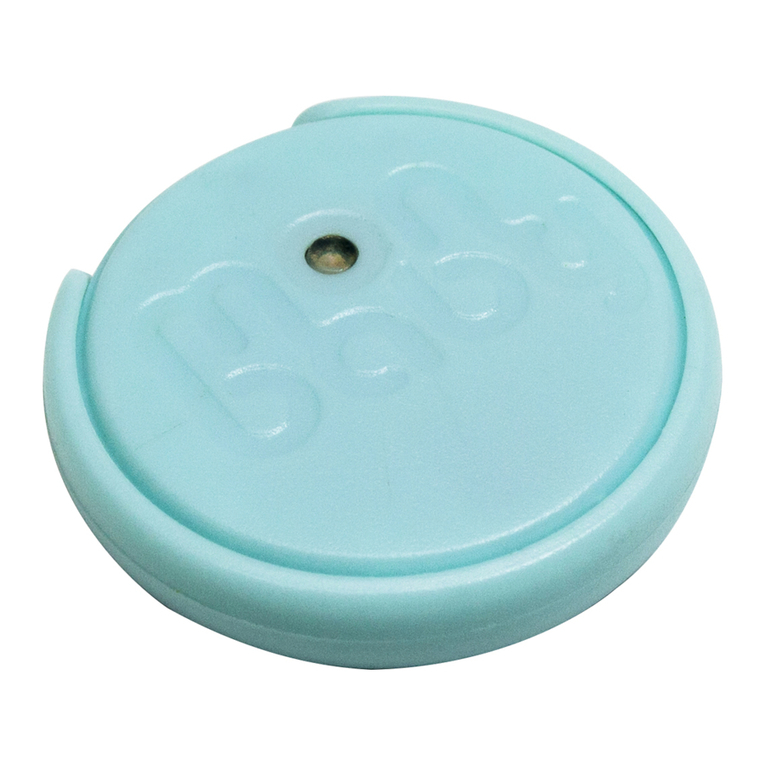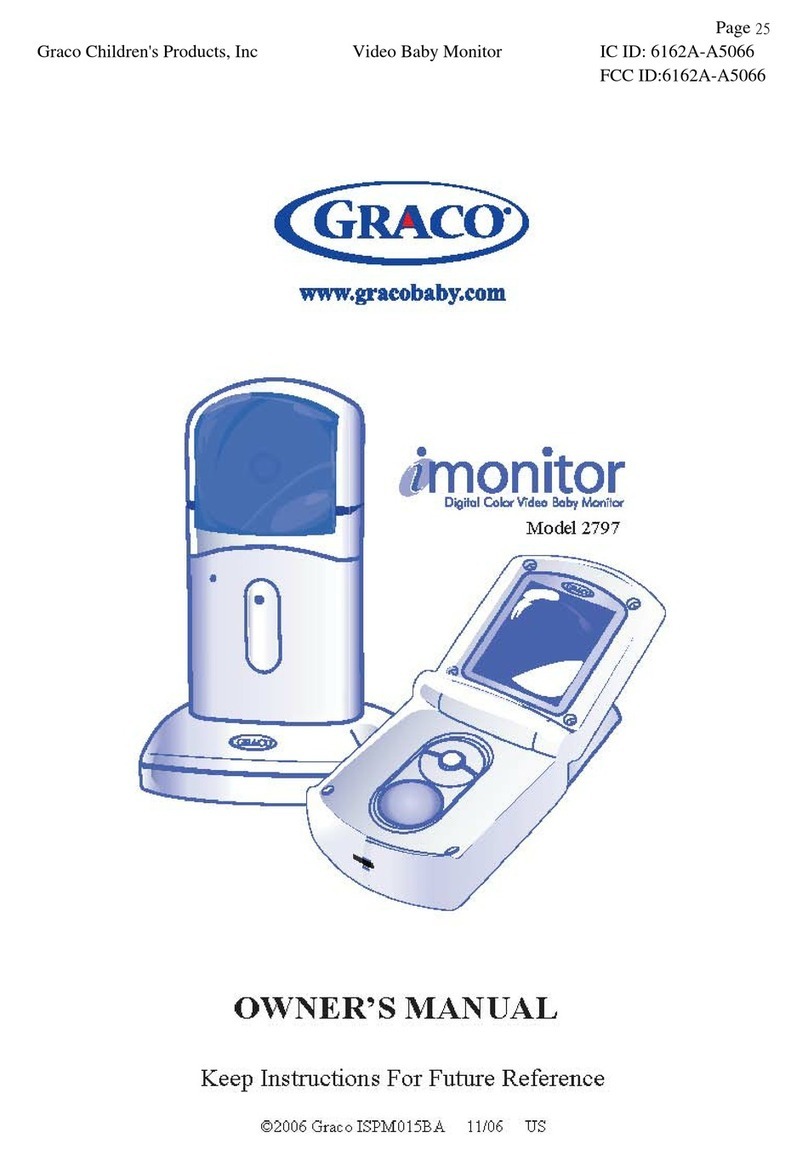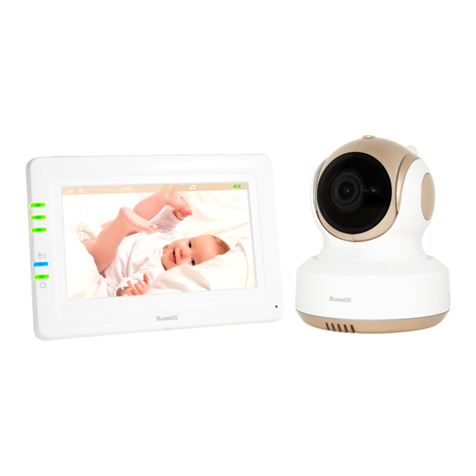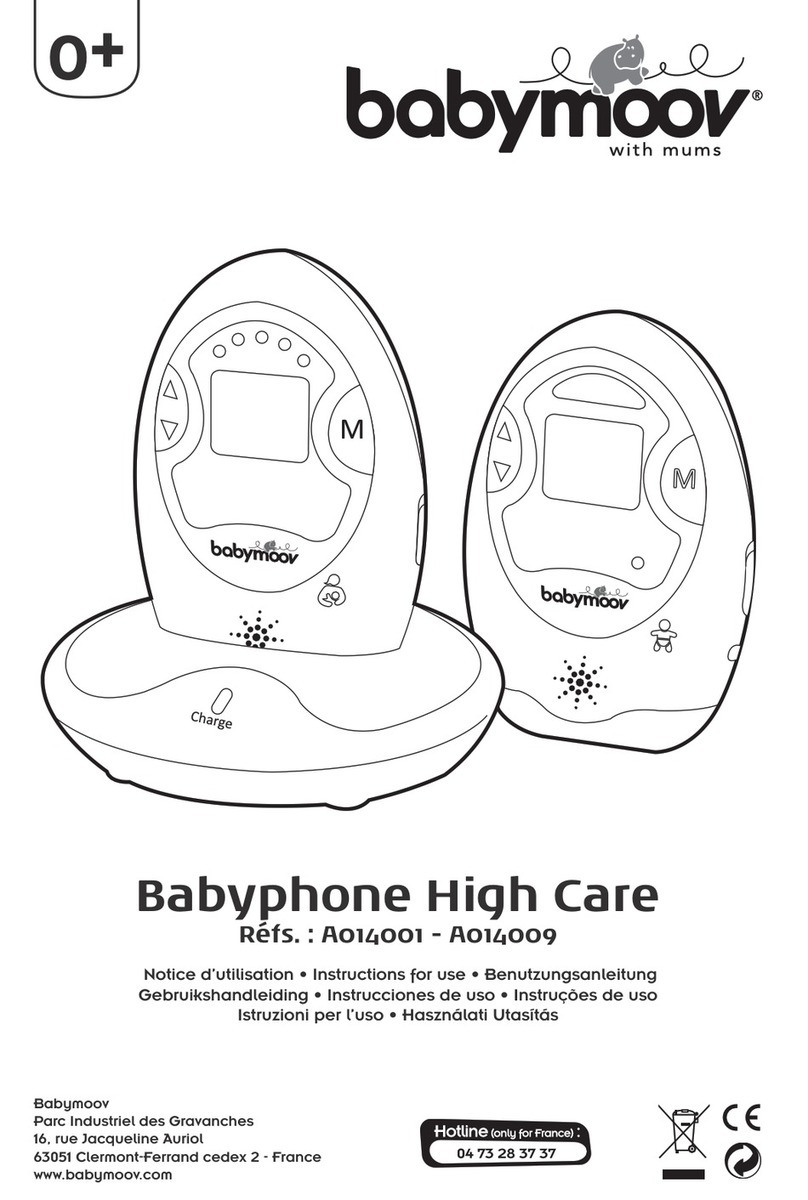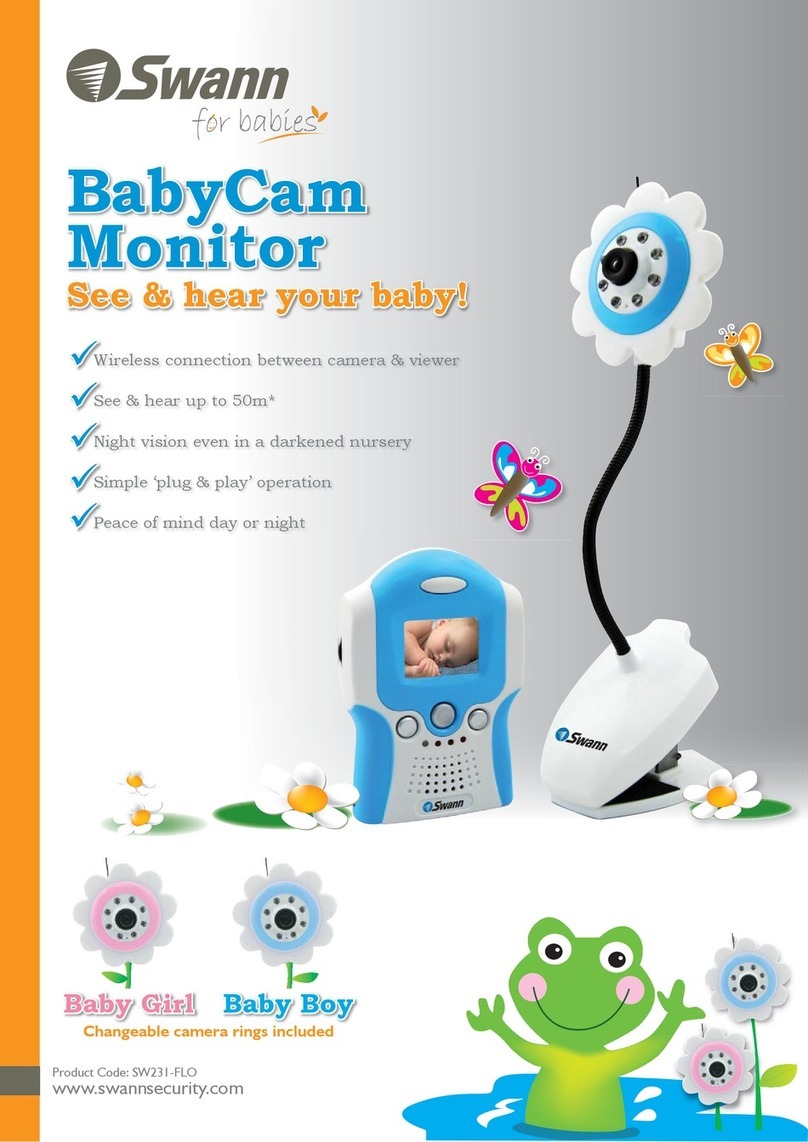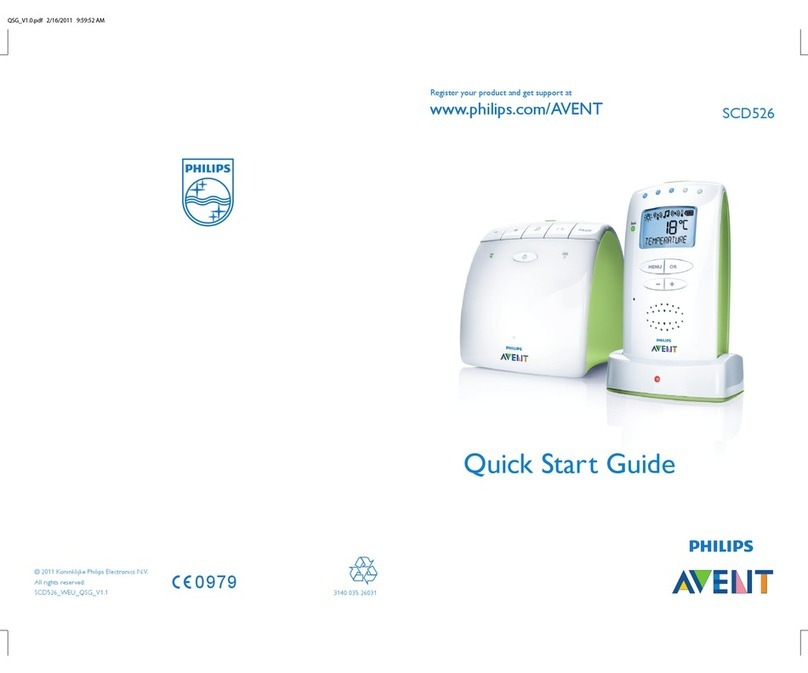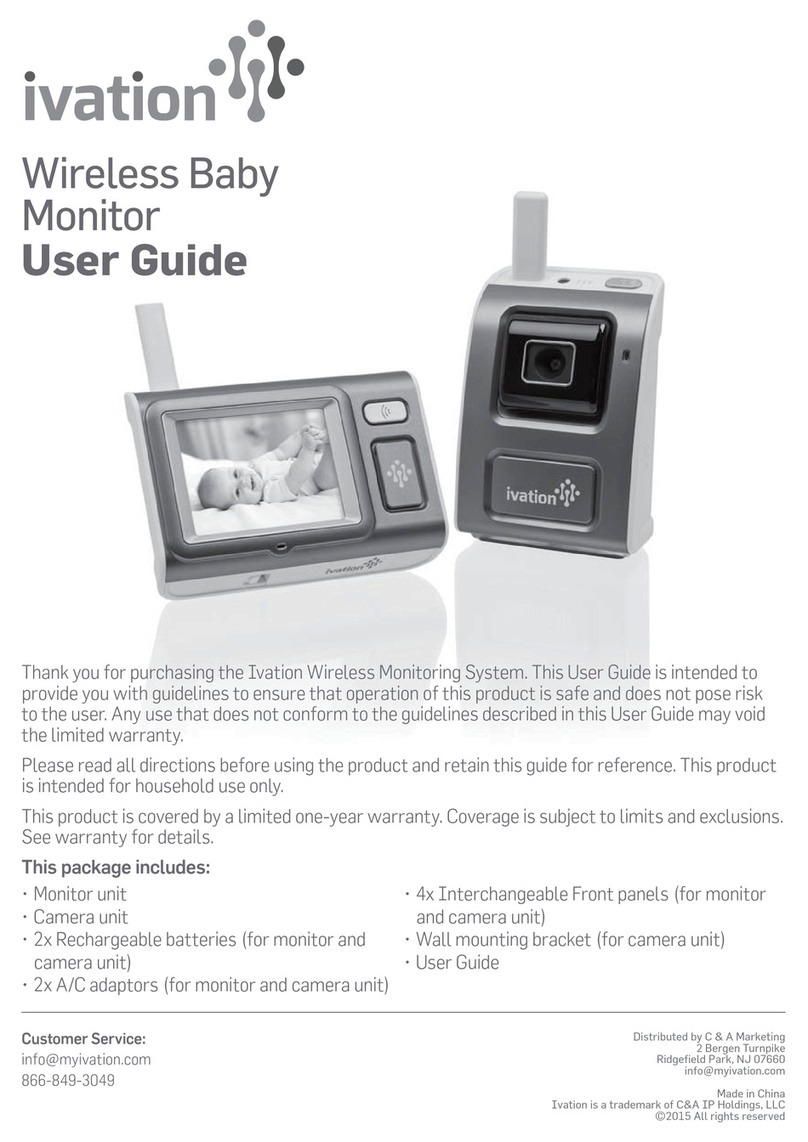
I
4
Baby control Audio
Digital
Tecnologia digitale:
Elevato standard di Privacy – Zero interferenze
Questo Baby Control Digitale Chicco permette un contatto chia-
ro con il tuo bambino dentro e fuori casa. La tecnologia digitale
DECT (Digital Enhanced Cordless Telecommunication) utilizzata,
permette una ricezione con una elevata immunità alle interfe-
renze causate da apparecchi analoghi. Infatti i baby control che
utilizzano questa tecnologia verificano costantemente la connes-
sione tra le unità (bambino e genitori) e selezionano automatica-
mente un nuovo canale non appena rilevano un’interferenza. La
portata è di circa 300 metri in campo aperto senza ostacoli.
All’affidabilità tecnologica si uniscono un design moderno e ca-
ratteristiche che rendono l’uso più confortevole. L’unità bambino
(trasmettitore) è dotata di una luce antibuio. L’unità genitori (ri-
cevitore) con pacco batterie ricaricabili, permette al genitore di
muoversi liberamente.
CONTENUTO CONFEZIONE
- Un trasmettitore (unità bambino)
- Un ricevitore (unità genitori)
- Due adattatori switching di rete 100-240V˜, 50/60Hz /
6V , 300mA o, alternativamente, due adattatori lineari
di rete 230V˜50 Hz / 6V , 300mA
- Pacco batterie ricaricabili NiMh 2x1.2V, 850 mAh tipo AA
- Un manuale d’istruzioni
AVVERTENZE GENERALI
• Gli elementi dell’imballaggio (sacchetti in plastica, scatole di
cartone, ecc.) non devono essere lasciati alla portata dei bambi-
ni in quanto potenziali fonti di pericolo.
• Prima di utilizzare l’apparecchio verificare che il prodotto e
tutti i suoi componenti non si presentino danneggiati. In caso
contrario non utilizzare l’apparecchio ma rivolgersi a personale
qualificato o al rivenditore.
• Non tentare di riparare il prodotto, ma limitarsi ad intervenire
come specificato nella sezione “Risoluzione di problemi”. Per
eventuali riparazioni contattare il Servizio Assistenza Clienti
(Customer Service) di Artsana S.p.A..
• Non aprire gli apparecchi. Trasmettitore, ricevitore ed adatta-
tori di rete non contengono parti utilizzabili dall’utente. In caso
di guasto rivolgersi a personale competente o contattare il
Servizio Assistenza Clienti (Customer Service) di Artsana S.p.A.
L’apertura dei dispositivi sopra elencati potrebbe portare a peri-
colo di shock elettrico
• Il Baby Control Digital Chicco non deve essere utilizzato come
monitor medico e non è inteso a sostituire la supervisione dei
bambini da parte degli adulti in quanto è destinato ad essere
usato solo come supporto per la loro sorveglianza. Ogni altro
utilizzo è da considerarsi improprio.
• Posizionare il trasmettitore e il ricevitore fuori dalla portata del
bambino su una superficie piana e stabile
• Tenere il trasmettitore, il ricevitore ed in modo particolare gli
adattatori di rete AC/DC fuori dalla portata dei bambini (il cavo
degli adattatori potrebbe costituire pericolo di strangolamento).
• E’ essenziale controllare regolarmente il correttofunzionamento
del trasmettitore e del ricevitore in particolare prima di ogni uti-
lizzo verificando che la ricezione del segnale sia effettivamente
possibile nella zona ed alla massima distanza d’uso prevista.
• La massima distanza operativa è di circa 300 metri in campo
aperto senza ostacoli (la portata potrebbe però ridursi note-
volmente all’interno delle abitazioni in base a particolari situa-
zioni ambientali, disposizione delle pareti e dell’arredamento
nell’abitazione e presenzadi strutture metalliche, disturbi/ cam-
pi elettromagnetici diorigine esterna e interna, muri in cemento
armato o tra locali disposti su piani diversi o a causa di batterie
non completamente cariche ,ecc.)
• Quando il trasmettitore e/o il ricevitore sono alimentati tramite
le batterie e/o pacco batterie ricaricabili , se lo stato di carica
delle stesse è insufficiente il prodotto smette di funzionare.
Pertanto si raccomanda di verificare sempre lo stato delle bat-
terie e/o pacco batterie ricaricabili all’atto della accensione di
entrambe le unità.
• Quando il ricevitore e/o il trasmettitore sono alimentati tramite
gli adattatori di rete, in caso di interruzione della distribuzione
dell’energia elettrica se lo stato di carica delle batterie del rice-
vitore e/o del trasmettitore è insufficiente, il prodotto smette di
funzionare. Pertanto si raccomanda di verificare sempre lo stato
delle batterie all’atto della accensione dell’ unità.
• Non utilizzare il trasmettitore, il ricevitore e gli adattatori in
posizione esposta ad agenti atmosferici (pioggia, sole, ecc.).
Qualora il prodotto venga utilizzato all’esterno, il trasmettitore
e il ricevitore devono essere alimentati tramite le sole batterie
interne: gli adattatori di rete forniti con il prodotto non sono
adatti per uso all’esterno.
• Per evitare il rischio di surriscaldamento, tenere trasmettitore,
ricevitore e soprattutto gli adattatori di rete AC/DC lontano da
fonti di calore, come per esempio caloriferi, termostati, stufe,
fornelli, finestre esposte al sole, ecc.
• Non utilizzare mai (in modo particolare se collegati alla rete
elettrica tramite gli adattatori di rete) le due unità vicino ad aree
o situazioni con presenza di acqua come vasche da bagno, lava-
trici, lavelli da cucina o su superfici bagnate. Non immergerli
o bagnarli. Non utilizzare apparecchi ed adattatori se caduti in
acqua, in tal caso rivolgersi a personale competente.
• Posizionare il Trasmettitore, il Ricevitore e gli Adattatori di rete
AC/DC in maniera da consentire un’adeguata ventilazione e per
evitare il rischio di surriscaldamento delle componenti.
• Non usare questo prodotto in prossimità di lampade fluorescen-
ti (Neon) od altre apparecchiature elettriche come televisori,
motori, personal computer, ecc. Potrebbero interferire con il
suo funzionamento.
• Utilizzare solo gli Adattatori di rete AC/DC forniti insieme
al prodotto o di tipo identico con medesime caratteristiche
elettriche. L’utilizzo di altri adattatori potrebbe danneggiare il
Trasmettitore e/o il Ricevitore ed essere causa di pericolo per
l’utilizzatore.
• Assicurarsi che il voltaggio degli adattatori di rete AC/DC (vedi
dati di targa posti sugli adattatori di rete AC/DC) corrisponda a
quello della vostra rete elettrica e che la spina degli adattatori di
rete sia compatibile con le prese di corrente del vostro impianto
elettrico.
• Collegare gli Adattatori di rete AC/DC a prese di alimentazio-
ne facilmente accessibili ma fuori dalla portata del bambino.
Posizionare i cavi degli adattatori AC/DC in modo tale da pre-
venire che il filo possa essere calpestato, che possano rimanere
impigliati oggetti posizionati sopra o accanto ad essi, o che pos-
sano essere accessibili al bambino e quindi costituire pericolo
per lo stesso (inciampo, strangolamento).
• Gli Adattatori di rete AC/DC, il trasmettitore ed il ricevitore
potrebbero risultare caldi al tatto durante il funzionamento.
Questo è da considerarsi normale.
• Scollegare sempre gli Adattatori di rete AC/DC dalla presa di
corrente quando l’apparecchio non è utilizzato.
• La sostituzione delle batterie e/o del pacco batterie ricaricabili
deve essere sempre effettuata solo da parte di un adulto e con
batterie o pacchi batterie ricaricabili aventi le stesse caratteri-
stiche di quelle indicate nel presente manuale d’istruzione.
ATTENZIONE!
PER EVITARE IL RISCHIO DI SHOCK ELETTRICI, NON RIMUOVERE
LA PROTEZIONE O TENTARE DI APRIRE GLI ADATTATORI DI
I


